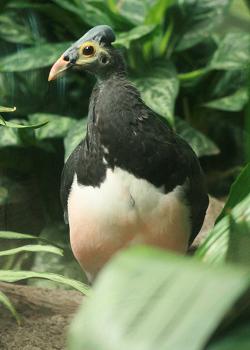Facts About Maleo
The maleo is a fascinating bird native to the islands of Sulawesi and Buton in Indonesia. It belongs to the unique genus Macrocephalon and is typically found in lowland forests, although it nests in open, sandy areas heated by the sun or geothermal activity.
This large bird is quite distinctive with its black feathers, yellow facial skin, and a pronounced bony casque on its head. Maleos are monogamous and have a remarkable method of laying eggs: they dig holes in the sand where they deposit their large eggs. The heat from the sand incubates the eggs, and once the chicks hatch, they are almost immediately able to fend for themselves.
Maleos breed year-round, with females laying between 8 to 12 eggs annually in coastal areas. Unfortunately, these birds face significant threats such as egg poaching and habitat loss due to human activities, which have led to a decline in their population. Consequently, the maleo is listed as Endangered on the IUCN Red List and is protected by Indonesian law.
Conservation efforts are underway to protect the maleo. Organizations like the Wildlife Conservation Society and the Alliance for Tompotika Conservation are working diligently to safeguard their habitats and educate local communities to prevent egg harvesting. Additionally, breeding programs at institutions such as the Bronx Zoo are contributing to the conservation of this unique species.
The maleo's intriguing behaviors, including its courtship rituals and dietary preferences—which interestingly include a fondness for peanuts—make it a remarkable bird. Through combined conservation actions and increased public awareness, efforts are being made to ensure the survival of the maleo despite the challenges it faces.

 Malaysia
Malaysia